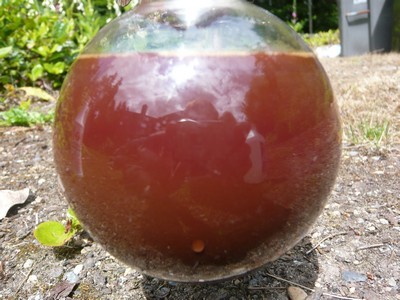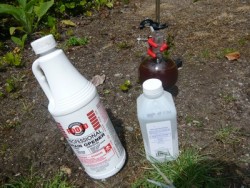As far as I can remember, I reacted raw MnO2 with contaminated HCl (Fe(II) contaminant), hoping to get a starting chemical for some MnCl2 or pure
MnO2. (However, I recently got manganese metal, so I no longer have the need). I really don't think that this is permanganate, but I didn't know
Mn(III) had this color. Please explain.
I guess I could try adding more HCl, just in case I really messed up on memory and was using sulfuric acid or some such instead... I'll just lean over
and take a deep whiff of the solution, see if I can detect any chlorine. 
|




















